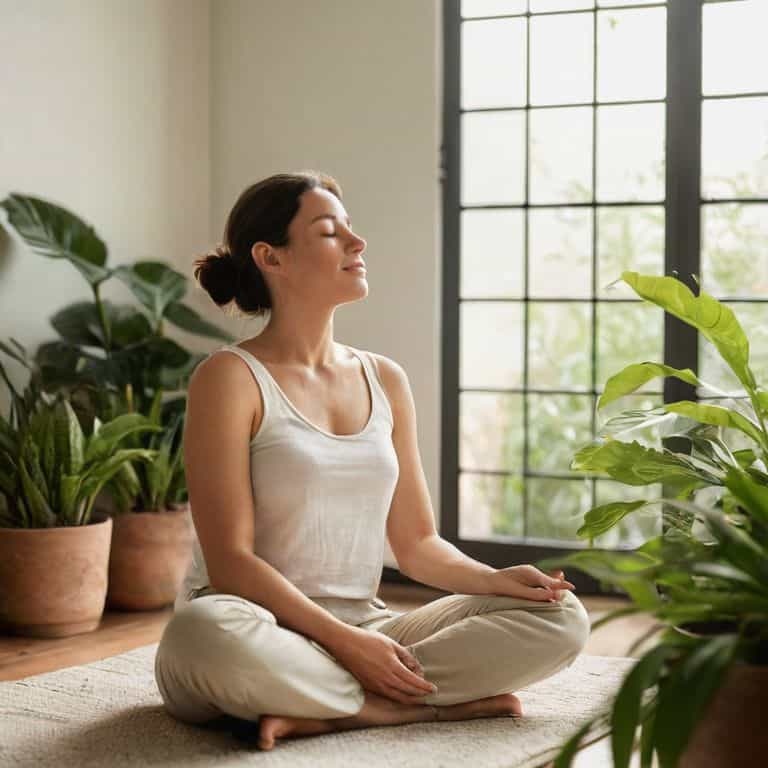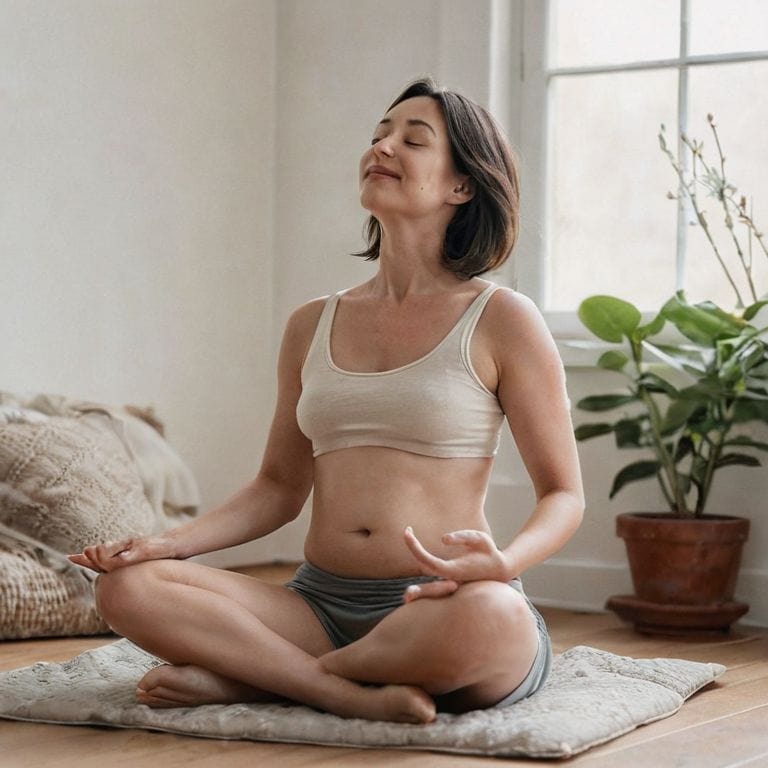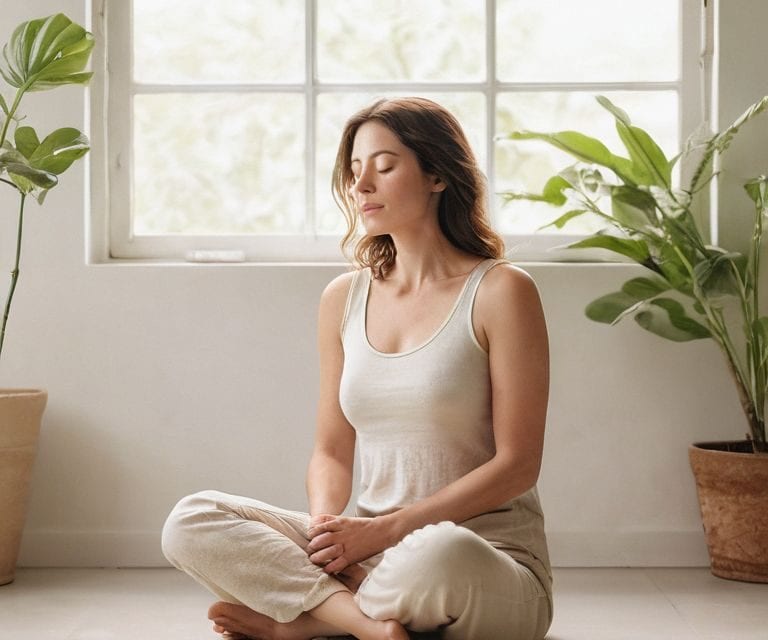I still remember the day I hit rock bottom as a digital marketer, feeling like I was drowning in a sea of deadlines and notifications. That’s when I discovered the power of breathing exercises for immediate calm – it was like a lifeline thrown my way. I learned that these simple yet potent techniques could calm my racing mind and soothe my frazzled nerves, allowing me to think clearly and focus on what truly mattered. As someone who’s been in the trenches, I can confidently say that breathing exercises are not just some New Age fad, but a proven way to reduce stress and increase productivity.
In this article, I’ll share my favorite breathing exercises for immediate calm, the ones that have been total game-changers for me on chaotic days. You’ll learn how to use these exercises to calm your mind and reduce stress, even in the midst of a hectic schedule. I’ll cut through the fluff and give you practical, actionable advice on how to incorporate breathing exercises into your daily routine, so you can start feeling more centered and focused right away. Whether you’re a fellow entrepreneur or simply someone looking to manage stress, I’m excited to share these valuable tools with you, and I’m confident they’ll bring you the same sense of calm and clarity they’ve brought me.
Table of Contents
Guide Overview: What You'll Need

Total Time: 10 to 30 minutes
Estimated Cost: Free – $0
Difficulty Level: Easy
Tools Required
- Comfortable and quiet space with minimal distractions
Supplies & Materials
- None required just a willingness to practice breathing exercises
Step-by-Step Instructions
- 1. First, find a quiet and comfortable spot to sit or lie down where you can relax your body and focus on your breath without any distractions. Take a moment to notice the sensation of your feet touching the ground, the sensation of the air on your skin, and the sounds around you.
- 2. Next, close your eyes and take a deep breath in through your nose, filling your lungs completely, and then exhale slowly through your mouth. As you breathe out, allow your body to release any tension or stress, feeling your muscles relax and your mind calm. Repeat this process a few times, focusing on the sensation of the breath moving in and out of your body, and remember to let go of any thoughts that come into your mind.
- 3. Now, bring your attention to your breath, focusing on the sensation of the air entering and leaving your nostrils. Try to focus on the present moment, letting go of any worries about the past or future. If your mind starts to wander, gently bring it back to the breath without judgment, simply acknowledging the thought and letting it go.
- 4. Begin to practice a 4-7-8 breathing pattern: inhale through your nose for a count of 4, hold your breath for a count of 7, and exhale through your mouth for a count of 8. Repeat this cycle several times, feeling your heart rate slow down and your body relax further with each repetition. Remember to listen to your body and adjust the counts if you need to.
- 5. As you continue to breathe, bring to mind a calming phrase or mantra that resonates with you, such as “I am calm and capable” or “I can handle whatever comes my way.” Repeat this phrase to yourself, allowing the words to sink deeply into your mind and heart, and feel the calmness and confidence spread through your body.
- 6. Next, try a body scan: lying down or sitting comfortably, bring your attention to your toes and notice any sensations or feelings of tension. As you exhale, imagine any tension or stress leaving your toes, and then move up through your body, scanning each part and releasing any discomfort or tightness as you go. This can help you release physical tension and promote deep relaxation.
- 7. Finally, when you are ready to conclude your breathing exercise, take a few deep breaths and slowly open your eyes. Take a moment to notice how you feel before getting up and going about your day, and remember to schedule self-care into your daily routine to maintain this sense of calm and well-being.
Breathe to Calm

As I guide my clients through diaphragmatic breathing benefits, I’ve noticed a significant reduction in their stress levels. This type of breathing engages the diaphragm, allowing for a fuller exchange of oxygen and carbon dioxide. By incorporating this technique into their daily routine, my clients are able to calm their minds and relax their bodies. I also recommend exploring relaxation techniques for stress, such as progressive muscle relaxation or meditation, to enhance the effects of breathing exercises.
In my own practice, I’ve found that mindful breathing for anxiety is a powerful tool for managing overwhelming emotions. By focusing on the sensation of the breath moving in and out of the body, we can quiet the mind and reduce feelings of anxiety. I encourage my clients to try yoga breathing techniques for calmness, which can be adapted to suit individual needs and preferences. Whether practiced in a yoga class or at home, these techniques can help regulate the breath and promote relaxation.
For those struggling with sleep, I recommend exploring breathing exercises for sleep. By practicing gentle, soothing breaths before bed, individuals can calm their nervous system and prepare their body for rest. I’ve also seen the benefits of holotropic breathwork therapy in reducing stress and anxiety, although this approach may require guidance from a qualified practitioner. By incorporating these techniques into their daily routine, my clients are able to cultivate a sense of calm and improve their overall well-being.
Diaphragmatic Breathing Benefits Unlocked
As I delve deeper into the world of breathing exercises, I’m excited to share with you the powerful benefits of diaphragmatic breathing. This type of breathing engages your diaphragm, the dome-shaped muscle that separates your chest and abdominal cavities. By using your diaphragm to breathe, you can slow down your heart rate, lower your blood pressure, and even reduce stress hormones like cortisol.
By incorporating diaphragmatic breathing into your daily routine, you can unlock a sense of calm and clarity that will stay with you throughout the day. I’ve seen it transform the lives of my clients, and I’ve experienced it myself – it’s a total game-changer. With regular practice, you can strengthen your diaphragm and make this type of breathing your new norm, leading to a more relaxed and focused you.
Mindful Breathing for Anxiety Relief Now
When I’m feeling anxious, I turn to mindful breathing exercises to calm my mind and soothe my body. By focusing on the present moment, I can let go of worries about the past or future. I’ve found that even just a few minutes of mindful breathing can make a huge difference in how I feel. I encourage you to try it too – take a few deep breaths, feel the air move in and out of your body, and allow yourself to relax.
As you practice mindful breathing, remember that it’s okay if your mind wanders – gently bring your attention back to your breath. With regular practice, you’ll find that you can tap into this sense of calm whenever you need it, and it will become a powerful tool in your anxiety-relief toolkit.
My Top 5 Breathing Hacks for Instant Serenity
- Cultivate awareness of your breath by setting aside 5 minutes each day to focus on the sensation of the air moving in and out of your body
- Practice diaphragmatic breathing by placing one hand on your belly and the other on your chest, ensuring your belly rises as you inhale and falls as you exhale
- Use the 4-7-8 method: inhale through your nose for a count of 4, hold your breath for a count of 7, and exhale through your mouth for a count of 8
- Incorporate mindful breathing into your daily activities, such as right before a meeting or during a short walk, to bring calm to chaotic moments
- Make breathing exercises a non-negotiable part of your daily routine by color-coding them in your calendar, just like you would any other important appointment
Key Takeaways to Breathe Easy
I’ve found that incorporating diaphragmatic breathing into my daily routine has been a total game-changer for reducing stress and anxiety, and I believe it can do the same for you
By practicing mindful breathing exercises, you can calm your mind and body in just a few minutes, making it an accessible tool for instant relaxation
Remember, taking a few minutes each day to focus on your breath can have a profound impact on your overall well-being, and it’s a habit that I encourage you to prioritize for a more balanced life
Finding Calm in the Chaos
When we breathe with intention, we don’t just calm our bodies, we reclaim our power to respond to life’s challenges with clarity and compassion.
Gabriela Rossi
Finding Lasting Calm in a Chaotic World

As we’ve explored the world of breathing exercises for immediate calm, I hope you’ve gained a deeper understanding of how diaphragmatic breathing and mindful breathing can be powerful tools in your wellness journey. We’ve discussed the benefits of diaphragmatic breathing benefits, including reduced stress and anxiety, and how mindful breathing for anxiety relief can bring a sense of calm to your life. By incorporating these techniques into your daily routine, you can begin to experience a greater sense of calm and clarity, even on the most chaotic of days.
As you move forward, remember that the key to lasting calm is consistency and patience. Don’t be too hard on yourself if you find your mind wandering or if you miss a day (or two) of practice. Instead, focus on making small, sustainable changes that nourish your mind, body, and spirit. By doing so, you’ll be well on your way to creating a culture of calm in your life, and experiencing the profound benefits that come with it, including increased self-awareness and a deeper sense of inner peace.
Frequently Asked Questions
How often should I practice breathing exercises to see noticeable improvements in my calmness and reduced stress?
I recommend practicing breathing exercises at least 3-4 times a week, ideally daily, to notice significant improvements in calmness and reduced stress. Start with short sessions, like 5-10 minutes, and gradually increase as you become more comfortable with the techniques. Consistency is key, so try to schedule it in your calendar, just like you would any other non-negotiable self-care activity.
Can breathing exercises be used in conjunction with other relaxation techniques, such as meditation or yoga, for enhanced benefits?
I love combining breathing exercises with other relaxation techniques like meditation or yoga – it’s a total game-changer. By pairing them, you can amplify the calming effects and create a more profound sense of inner peace. I often recommend starting with deep breathing, then transitioning into a meditation or yoga practice for enhanced benefits.
Are there any specific breathing exercises that are more effective for immediate calm in high-pressure situations, such as public speaking or tight deadlines?
For immediate calm in high-pressure situations, I swear by the 4-7-8 method and box breathing. These techniques can be total lifesavers, especially when I’m about to go on stage or meet a tight deadline. They help slow down my heart rate and clear my mind, allowing me to focus and perform at my best.
